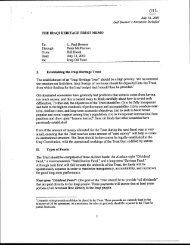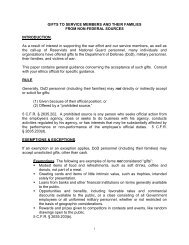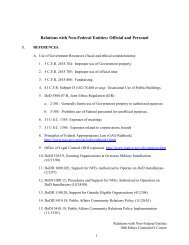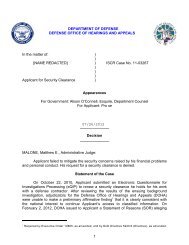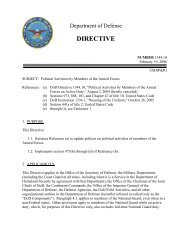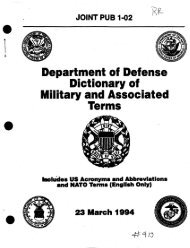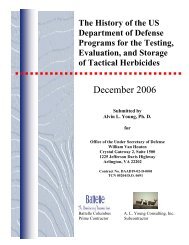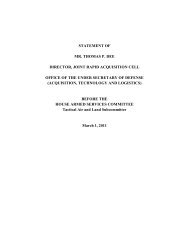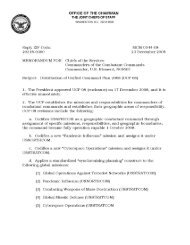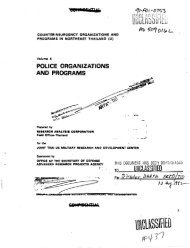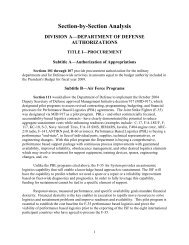Lightweight ExoAtmospheric Projectile (LEAP) - United States ...
Lightweight ExoAtmospheric Projectile (LEAP) - United States ...
Lightweight ExoAtmospheric Projectile (LEAP) - United States ...
Create successful ePaper yourself
Turn your PDF publications into a flip-book with our unique Google optimized e-Paper software.
. .1 - •<br />
attitude control-subsystem (ACS), a fast-bum solid rocket motor, a complete guidance<br />
I .<br />
package and a te I emyry umt.<br />
'<br />
The flight profile for ithe MOCF is similar to that of the single rocket launch with PMB<br />
which is shown in Fi~e 9. The Free Flyer vehicle consists of a liquid propulsion system,<br />
I<br />
using a maximum of 833 grams of nitrogen tetroxide (N 2 0.), a maximum of 504 grams of<br />
hydrazine (NJL) and !monomethylhydrazine (MMH), and a visible-light sensor.<br />
I<br />
I<br />
The target reaches an apogee of approximately 364 km (226 miles) with apogee for the<br />
PMB at 354 km (220 lnues ). Thereupon, the target stabilizes for reentry and firing of the<br />
target's motor. Whenl it reaches a re-entry altitude of approximately il95 km (121 miles),<br />
. I<br />
the target reentry rocfet is fired. Upon burnout, and at a distance of 12 km (7 miles)<br />
between the target and the PMB, the Free Flyer is deployed from the' PMB, and attempts<br />
to intercept the targei. The PMB will be recovered by parachute. All debris from the<br />
I<br />
experiment is expecte9 to fall within the dispersion area illustrated in Figure 7 A<br />
Single Rocket Launch with <strong>LEAP</strong> projectile and Target - WSMR<br />
Two flight tests will j conducted in th;s test mode. In each test a single vehicle;,; used<br />
I<br />
to launch the <strong>LEAP</strong> projectile, and target; and in each test a PMB/projectile combination<br />
I .<br />
and a target are placed in separate sub-orbital trajectories (Figure 9). Flight test objectives<br />
are to demonstrate the infrared seeker and guidance and control system capability to divert<br />
a Space Test Projectilf (STP) to intercept a cold body target. Technological evaluation<br />
centers on the performance of the STP's Medium Wave Infrared (MWIR) sensor-seeker,<br />
its guidance and contrbl system, and the STP's liquid hi-propellant maneuvering system.<br />
The launch vehicle fo~ the single rocket launch flight test mode consists of the following<br />
major assemblies:<br />
1) · an M56Al sblid-fud rO'cket motor with attached interstage .sectio~; .<br />
2) a PMB; I . . .<br />
3) a <strong>LEAP</strong> projectile;<br />
" .<br />
1-24



